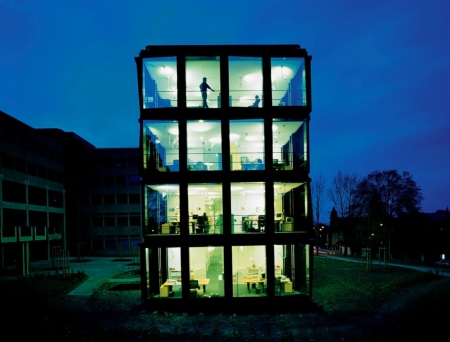Live from SAPinsider Studio: Anil Chintaparthi of Accenture on the Enterprise Data Warehouse
Anil Chintaparthi, Senior Manager, Accenture Digital Group, joins SAPinsider Studio at the 2016 BI-HANA event. Chintaparthi discusses the top three considerations for leveraging SAP HANA architecture in an enterprise data warehouse, and what SAP S/4HANA means for the future of the enterprise data warehouse.
This is an edited version of the transcript:
Ken Murphy, SAPinsider: Hi this is Ken Murphy with SAPinsider, and I’m at the SAPinsider BI-HANA-IoT event in Las Vegas. Joining me today is Anil Chintaparthi, who is the Senior Manager, Accenture Digital Group. Anil, thanks for joining me today.
Explore related questions
Anil Chintaparthi, Accenture: Thanks Ken.
Ken: You’re here today to talk to us about enterprise data warehousing in the context of SAP HANA. A lot of things we head in the keynote were about the evolution of SAP HANA. Can you address what that means for SAP BW and in the context of enterprise data warehousing?
Anil: One of the things SAP has done a really fantastic job of is to make the term performance synonymous with HANA. Excellent branding; you can wake anyone up from their sleep and you talk about HANA they’ll talk about performance. But I think the not-so advertised aspect of it is the architecture possibilities that HANA can provide specifically for all clients that are on BW platforms. It is important for clients to understand what those architectural possibilities are and figure out how they can generate value to their existing investments in BW. If they don’t do so, the danger is that BW could potentially get relegated as another data mart, a great extractor for data from ECC into a data mart that would then get consumed by other enterprise data warehouses. So I think this is the right time for BW clients to start investigating from the perspective of how HANA can be used to leverage from an architectural possibility perspective.
Ken: What are some of those key features and functionalities on the architecture side?
Anil: There are three key aspects I’m going to talk about in my session. The first is the many data ingesting possibilities that the architecture now offers for you. Earlier BW used to be viewed as a – for lack of a better word – closed data warehouse which was very specific and relevant to ECC datasets. But now HANA introduces so many more possibilities in terms of how data can be ingested, whether a physical layer or reading it remotely. So the possibilities with data ingestion are many-fold. The second part of it is modeling possibilities offered at the semantic layer, both from a data modeling perspective as well as from a reporting consumption perspective. There are many more features that BW on HANA stands to offer at this point in time. And the combination of these two results in the third possibility, which is making the architecture open enough for data discovery and visualization. So for me, I think these are the three benefits that every client should try and go after within their BW systems: data ingestion, semantic layer modeling, and making the architecture open enough to promote data discovery, self-service, and visualization.
Ken: With the architecture changes, a lot of companies are asking if they still need to have SAP BW. It seems the answer might be it depends, I guess?
Anil: So, with the advent of S/4HANA, there is a little bit of confusion on the ground in regards to maybe we can do away with BW. The reality is that organizations still need an enterprise data warehouse. S/4HANA is extending its footprint and possibilities in terms of being able to deliver more and more on the operational reporting side of things, and analytics on the operational reports. But that does not necessarily take away the need for an enterprise data warehouse. And whenever you’re looking at mergers and divestitures which is a constant scenario in today’s world, you do need an enterprise data warehouse. Now, there is another debate in terms of do I need to use BW as my enterprise data warehouse? Or can I use HANA sidecar as my enterprise data warehouse? Now that is a valid discussion, and organizations need to go through their analysis of why they would want to go in either direction. But the reality is, enterprise data warehouses are needed. BW has a valuable role to play, and given the new architectural possibilities, BW offers what HANA as a sidecar offers too, so why would you not want to tap into a two-for-one offer rather than just keep yourself relegated to HANA sidecar as an EDW because BW has a lot to offer.
Ken: So that addresses the question people have about what is it mean for SAP BW in a multi-HANA landscape?
Anil: Yes.
Ken: And what are the primary considerations for moving from a traditional SAP BW to that enterprise data warehousing platform?
Anil: The answer would vary depending on if you’re an existing BW customer or a new BW customer. The answer is rather easy for the new BW customer because they’ve got a blank canvas and can paint the picture the way they choose to do so. And they’re unshackled by the earlier solutioning architecture purpose. So for the new clients is simple; try and leverage everything that you can on the architectural possibilities. For existing BW installs, it needs to be a well thought-out process in regards to how they want to transition to that open architecture, and it’s not going to be big bang and there is a lot of risk associated with going big bang. The key for them to figure out is what are the business value propositions where in the open architectural concept helps and resonates and try to surely and steadily move forward in that direction. So pick and choose the solution components that you want to start moving towards the architectural front, and start taking steps in that direction. Secure the business value so you get the support to do more of it, but ultimately your target is to hit that open architectural realm that SAP has provided to clients.
Ken: Anil, thanks for joining us today.
Anil: Thanks Ken.






